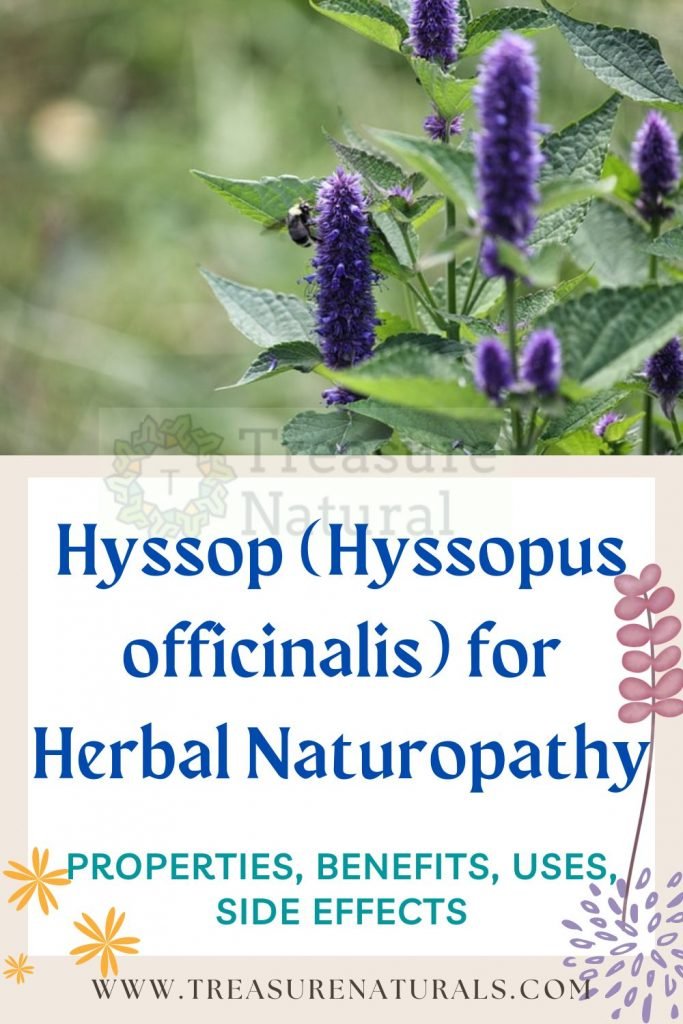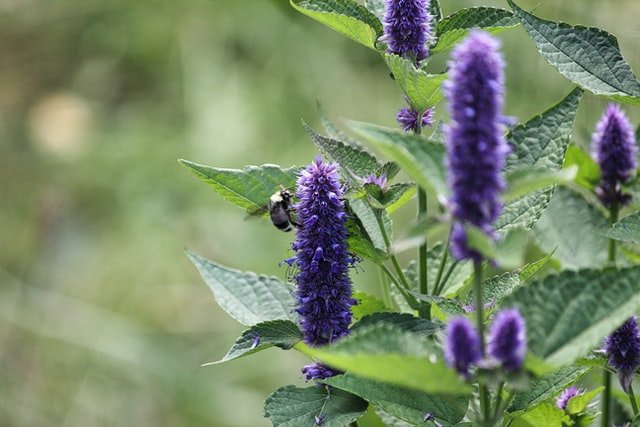
Hyssop (Hyssopus officinalis) is a plant of the Lamiaceae family useful against coughs, colds, asthma and cystitis. Let’s find out better.
Properties of hyssop
The flowering tops of hyssop contain flavonoids, tannins, bitter substances (marrubin) and a very pleasant essential oil, responsible for most of its balsamic and expectorant properties for the respiratory tract. In phytotherapy it is used to quell coughs and asthma attacks, because it thins and helps eliminate phlegm especially from the bronchi and lungs.
Also thanks to the essential oil it has digestive properties: it stimulates the secretion of gastric juices, promotes digestive processes, eliminates intestinal gas.
The presence of flavonoids gives hyssop a diuretic and antiseptic action for the urinary tract, capable of increasing diuresis and keeping the urinary duct free from bacteria, useful in bacterial infections and inflammation, to treat cystitis.
How to use
INTERNAL USE
INFUSION: 1 level tablespoon of hyssop top, 1 cup of water
Pour the hyssop into the boiling water and turn off the heat. Cover and leave to infuse for 10 min. Filter the infusion and drink it in case of meteorism, cough and digestive problems.
EXTERNAL USE
Compresses with sterile gauze compresses soaked in infusion, are excellent for tired eyes, to purify the skin and to heal wounds.
Gargling with the infusion water helps in inflammation of the throat.
Contraindications of hyssop
There are no particular contraindications for hyssop. Its use is not recommended only in case of ascertained sensitivity towards the components.
Description of the plant
Perennial aromatic plant, it is perhaps among the richest in essential oils, with a bushy habit formed by erect, slender stems up to 60 cm high. The leaves are small, oblong and narrow of 2-5 cm, of a beautiful deep green color, with raised veins.
The flowers are small, bluish, gathered in one-sided spikes. The fruit is a tetrachenium, which contains a single black and wrinkled seed.
The habitat of the hyssop
Native to southern Europe and western Asia and grows spontaneously mainly in the mountainous areas of northern Italy up to 1200 m above sea level.
Background

The botanical name “hyssop” can be traced back both to the Greek language hyssopos , which means ” arrow-shaped “, and to derive from the Hebrew Esobh which means “sacred grass“, used together with cedar wood, according to the Ancient Testament, by King Solomon, for fumigations, for the purpose of purifying the air and preventing leprosy. Traditionally, in fact, the hyssop plant was used in twigs gathered as an aspersorium and used in purifications.
Also in the Old Testament (Ex 12:22), it was used as a brush to mark the doors of the Jewish families with lamb’s blood, which the destroying angel should have saved on the occasion of the exodus from Egypt.
In the New Testament, (John 19:29) it is said that a sponge impregnated with vinegar was fixed on hyssop wood and offered to drink to Jesus on the cross, as an act of piety. Since the stem of the plant cannot be longer than 30 cm, plus another 30 cm in length of the arm, this would indicate that the crossbar was not as high as it is sometimes portrayed but that the head of Jesus was located at about 2.20 meters from the ground.
The magical properties of hyssop have in the past been believed to be false beliefs, the result of superstitions. Modernity has confirmed the extraordinary positive benefits that this plant brings. Due to the particular aroma very similar to mint, it is frequently used in the preparation of cologne or in the kitchen, to give flavor to soups and salads.






